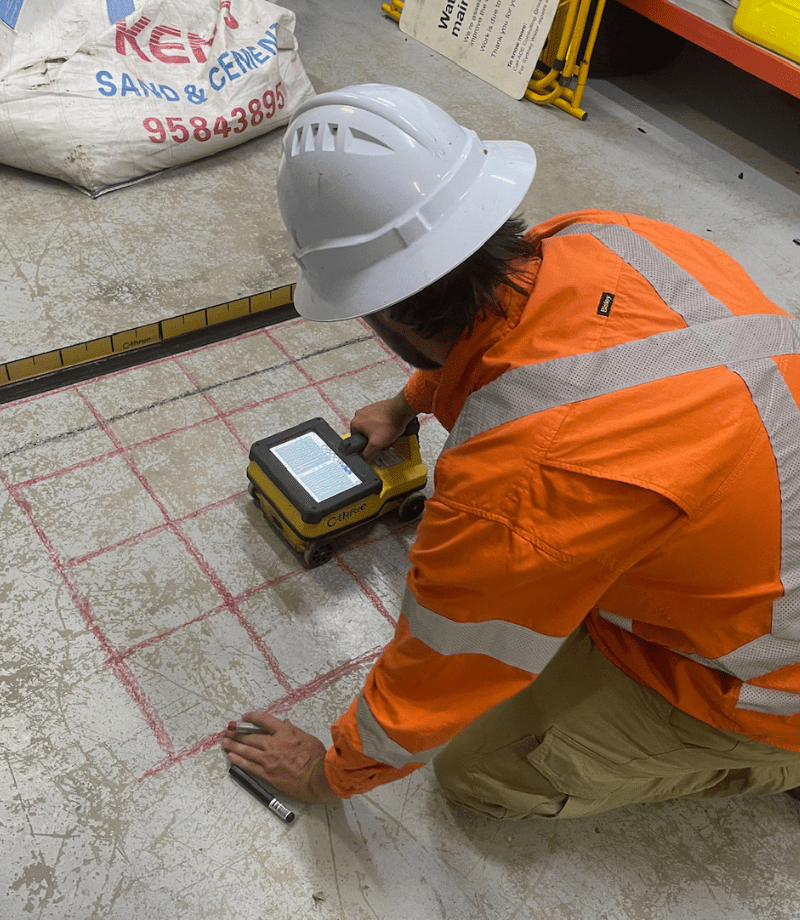Concrete Scanning: A Crucial Step In The Direction Of Making Certain Structural Honesty and Security
In the world of building and infrastructure upkeep, the importance of concrete scanning can not be overemphasized. By utilizing advanced modern technology and methods, concrete scanning serves as a crucial device in ensuring that the integrity and security of buildings and bridges are maintained to the highest possible criteria.
Relevance of Concrete Scanning
Concrete scanning plays a critical role in ensuring the architectural integrity and safety of buildings and facilities projects. By making use of sophisticated modern technologies such as ground-penetrating radar (GPR) and electro-magnetic induction, experts can non-destructively inspect concrete structures to discover prospective issues, spaces, ingrained things, and support layout. This process enables early detection of abnormalities that could endanger the stability of a framework, stopping costly problems and making certain the safety of occupants.
Before exploration, cutting, or coring into concrete, scanning helps recognize the specific places of rebar, post-tension cords, and various other embedded components, lowering the danger of unintended hits that could lead to architectural weaknesses. Additionally, concrete scanning help in top quality control by verifying the thickness of concrete covers and finding any kind of disparities that may impact the general durability of the framework.
Technology for Concrete Evaluation

Benefits of Early Detection
Timely discovery of architectural concerns can significantly reduce dangers and make sure the durability of building tasks. By recognizing possible troubles at an early stage in the construction process, stakeholders can take aggressive actions to resolve problems prior to they intensify into larger and much more costly problems. Among the vital advantages of very early detection is the prevention of architectural failings, which can pose serious security risks and lead to job hold-ups and economic losses.
Additionally, very early detection permits prompt repair services and upkeep, which can assist extend the lifespan of the structure. By addressing concerns promptly, construction teams can prevent expensive fixings or perhaps the requirement for premature replacement of architectural parts. This aggressive method not only conserves money and time but also improves the general safety and resilience of the construction task.
Furthermore, very early discovery can improve task planning and decision-making by giving stakeholders with useful understandings into the condition of the framework. Armed with this details, job managers can make educated choices pertaining to construction products, timelines, and methods, causing extra successful and reliable job results.
Making Sure Architectural Stability
Guaranteeing the architectural stability of a building and construction project is vital to its safety and durability. Architectural stability refers to the capacity of a structure or facilities to keep its form and function under numerous lots and ecological problems. To attain this, extensive analysis and monitoring of special info the structure are necessary. Concrete scanning plays an essential function in making certain structural stability by finding potential issues such as spaces, delamination, or support deterioration that could compromise the stability of the framework with time.
By making use of advanced scanning technologies like ground-penetrating radar (GPR) and try this out electromagnetic induction, building and construction specialists can non-invasively evaluate concrete frameworks to recognize areas of issue underneath the surface. This positive approach permits for the early discovery of weak points or issues, allowing timely repair services or support to avoid structural failures.
Regular concrete scanning throughout various construction stages and throughout the life process of a framework can help preserve its stability, mitigate dangers, and make certain the security of residents. By prioritizing architectural stability through concrete scanning, building and construction tasks can improve their resilience and resilience, ultimately adding to higher security and longevity.

Protecting Against Important Failures
Implementing regular inspections, such as concrete scanning, can expose hidden issues like gaps, cracks, or rust that can compromise the stability of a framework. By utilizing advanced scanning technologies like Ground Penetrating Radar (GPR) or Concrete X-ray, engineers can non-destructively examine the condition of concrete and determine weak factors that require reinforcement or repair service.

Conclusion
To conclude, concrete scanning plays an important role in ensuring architectural integrity and safety and security by using advanced innovation for early discovery of potential concerns. This proactive strategy aids protect against crucial failings and guarantees the security of frameworks. It is vital to focus on concrete inspection as a typical method to shield the durability and safety and security of buildings and facilities.
Concrete scanning plays an important duty in guaranteeing the architectural integrity and safety and security of buildings and Check This Out framework projects. Furthermore, concrete scanning help in quality control by confirming the density of concrete covers and spotting any type of disparities that may impact the total resilience of the structure. Concrete scanning plays a critical role in making sure architectural security by spotting prospective concerns such as gaps, delamination, or support corrosion that might jeopardize the honesty of the framework over time.
In final thought, concrete scanning plays a crucial role in making sure structural honesty and security by making use of sophisticated modern technology for very early discovery of prospective problems.